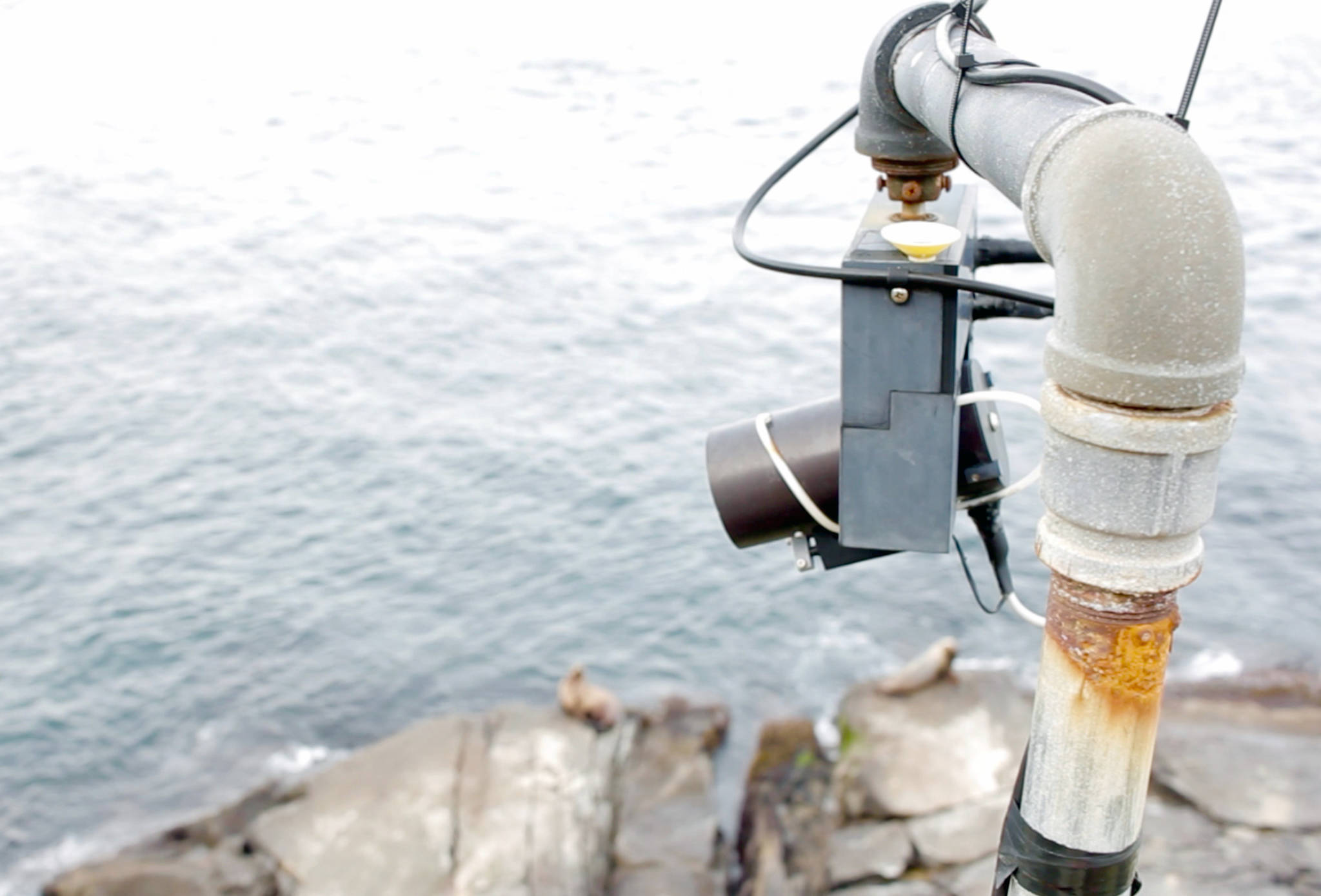The video equipment used to monitor sea lions at a rookery just south of Resurrection Bay is at the end of its life, and researchers are turning to crowdfunding to keep the two-decades-long project afloat.
The Alaska SeaLife Center is asking the public to donate to a GoFundMe campaign to replace cameras and equipment that monitor the Steller sea lion rookery on Chiswell Island, about 35 miles south of Seward. Researchers use the equipment to follow survival rates, in particular reproductive females in the rookery.
Original funding came through grants, but the center has been unable to secure any funding for an upgrade. With the equipment near failure, researchers were at a desperation point and wanted to try something new, SeaLife Center research scientist John Maniscalco said. The center is hoping to raise $30,000 by October.
Maniscalco, a specialist in sea lion behavior and population dynamics, said the project has provided a safe and convenient way of doing in-depth research on the population over the years. “We’ve learned a heck of a lot.”
The research began in the wake of a steep Stellar sea lion decline, which reduced the Alaska population by 80 percent between the 1970s and 1990s.
While there is still disagreement over the causes of the decline, Maniscalco thinks multiple factors may be responsible, including changes in the ecosystem that decreased the availability of fatty fish and interaction with commercial fishing in the region, which limited food resources and put sea lions at risk of being caught in a net or shot.
Killer whales, looking for food, may also have cut into the sea lion population.
”I think all three of these major factors probably contributed to the decline,” he said.
SeaLife center researchers have seen the population bounce back during their two decades of study.
“Since we’ve been watching the population have been doing really really well,” Maniscalco said. “Reproductive rates have improved. Juvenile survival rates have improved.”
Currently, the project’s three working cameras — each mounted separately — capture sea lions at a 700-foot by 1,400-foot rookery on the island. Footage from the sea lion cameras is streamed live on Seward’s Channel 6 during different times of the day, depending on visibility, year-round.
SeaLife Center research associate Pamela Parker hopes the new equipment will allow a live, continuous internet stream and serve as an opportunity for the public to become “citizen scientists.”
“I’m super excited,” she said. “I’ve wanted a digital feed for a long time.”
The new equipment should also allow researchers to view footage from multiple cameras at once, she said.
Parker has worked on the project since it started 18 years ago, and now oversees day-to-day operations. During her time on the project, Parker has witnessed three generations of females, and seen a variety of maternal behavior.
She spends her days taking a census count of animals, determining age and sex and identifying individuals using fungal patches, scars, flippers and other unique markers.
“As someone who’s done this for 18 years, the excitement lies in seeing an animal you haven’t seen in a year or two,” she said. “Or an animal you didn’t think was doing well come back the next spring.”
Not only does the ongoing monitoring allow researchers to extrapolate the number of sea lions in other areas, it helps show environmental conditions, like the amount of available food, by the animals’ foraging habits. The longer it takes a sea lion to forage, the harder it may be to find food.
Although the sea lion population has grown since the project began, most recently there have been setbacks — fewer pup births were recorded two years running. “We have not have that over our 18 years of monitoring,” Parker said.
Maniscalco said an increase in killer whale activity in Resurrection Bay after 2014, as well as a warm-water “blob” that hit Alaska in the winter of 2015 and 2016, may be factors in the decline of seal pup births.
“At this point it’s really important to keep this project going because things are changing,” Maniscalco said.
Reach Erin Thompson at ethompson@peninsulaclarion.com.

